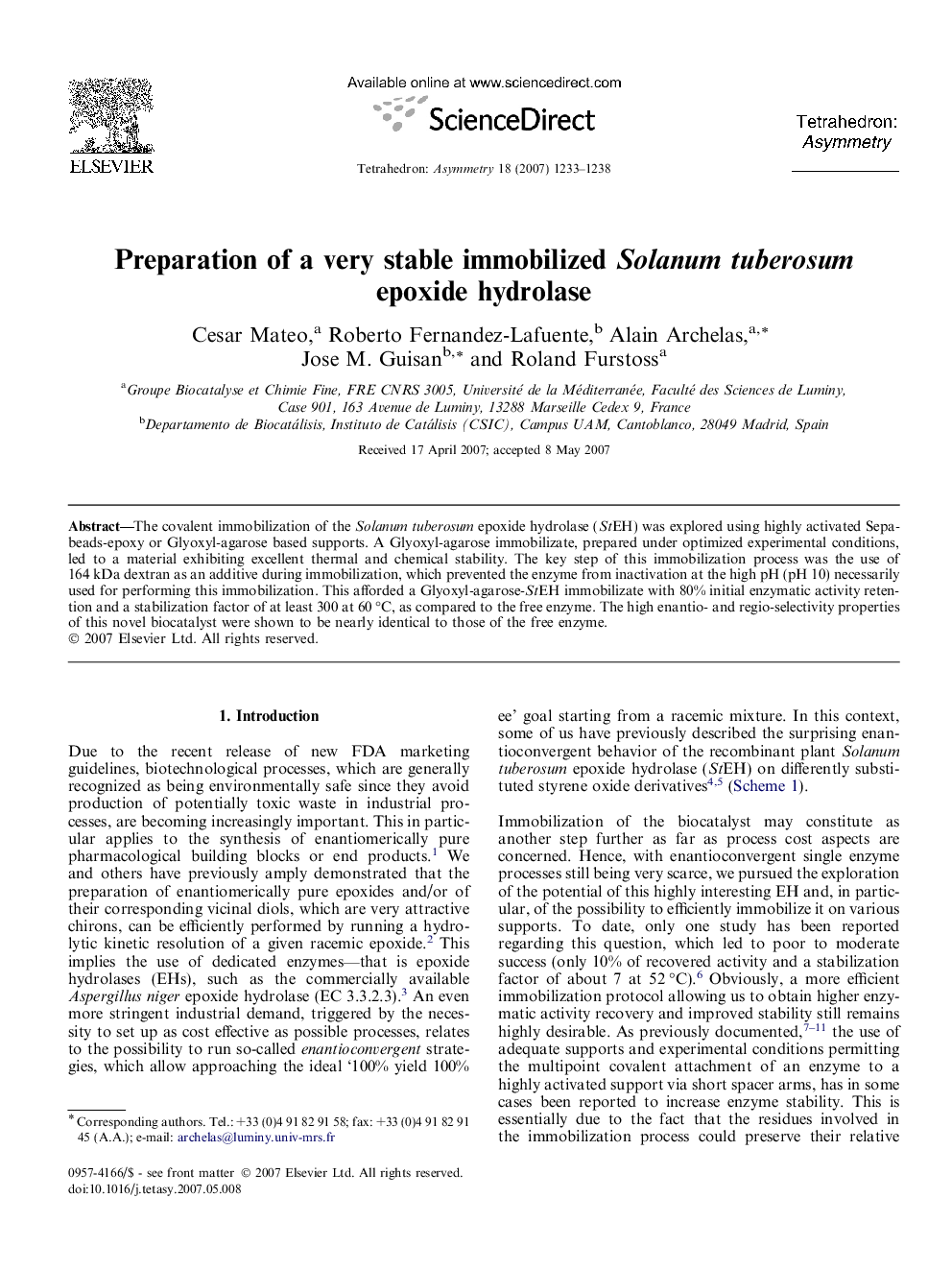| Article ID | Journal | Published Year | Pages | File Type |
|---|---|---|---|---|
| 1348706 | Tetrahedron: Asymmetry | 2007 | 6 Pages |
Abstract
The covalent immobilization of the Solanum tuberosum epoxide hydrolase (StEH) was explored using highly activated Sepabeads-epoxy or Glyoxyl-agarose based supports. A Glyoxyl-agarose immobilizate, prepared under optimized experimental conditions, led to a material exhibiting excellent thermal and chemical stability. The key step of this immobilization process was the use of 164 kDa dextran as an additive during immobilization, which prevented the enzyme from inactivation at the high pH (pH 10) necessarily used for performing this immobilization. This afforded a Glyoxyl-agarose-StEH immobilizate with 80% initial enzymatic activity retention and a stabilization factor of at least 300 at 60 °C, as compared to the free enzyme. The high enantio- and regio-selectivity properties of this novel biocatalyst were shown to be nearly identical to those of the free enzyme.
Related Topics
Physical Sciences and Engineering
Chemistry
Inorganic Chemistry
Authors
Cesar Mateo, Roberto Fernandez-Lafuente, Alain Archelas, Jose M. Guisan, Roland Furstoss,
